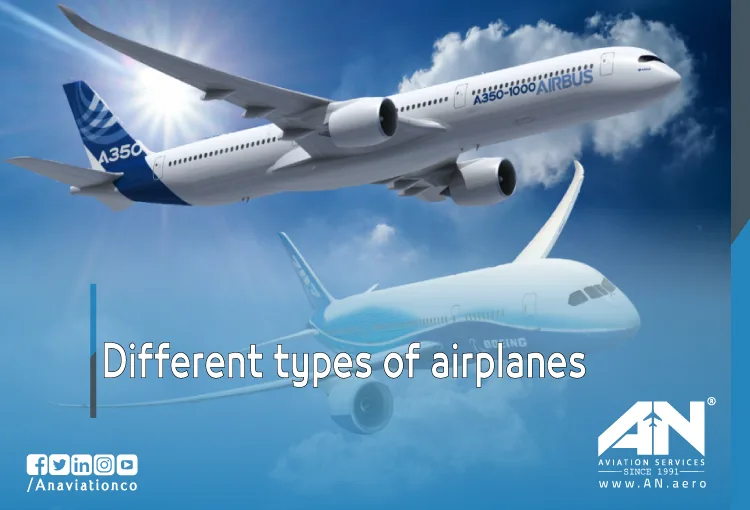
The world of aviation is as diverse as it is fascinating. Airplanes have evolved significantly since their inception, catering to a wide variety of needs, from passenger travel to cargo transportation and even specialized missions like search and rescue. With each type of aircraft tailored to specific purposes, they differ in size, design, speed, passenger capacity, and technology. This blog takes a closer look at the different types of airplanes, their characteristics, and their role in aviation.
A Broad Classification: Lighter-Than-Air vs. Heavier-Than-Air Aircraft
To understand airplanes better, it’s essential to start with the broadest classification: lighter-than-air aircraft and heavier-than-air aircraft.
Lighter-Than-Air Aircraft:
Lighter-than-air aircraft, such as hot air balloons, airships, and blimps, operate by using gases like helium or hydrogen to achieve lift. While they’re not as common in modern aviation, they were once an innovative mode of transportation and are still used for advertising, surveillance, and sightseeing.
Heavier-Than-Air Aircraft:
Most of the airplanes we encounter today fall into the heavier-than-air category. These rely on aerodynamic designs, engines, and propulsion systems to generate lift and maintain flight. This group includes everything from private jets to commercial airliners like the Boeing 737 or the Airbus A380.
Different Types of Airplanes by Use
Airplanes are designed to serve specific purposes. Here are some common categories:
1. Commercial Airliners:
Commercial airliners are the backbone of passenger air travel. These are large airplanes capable of carrying hundreds of passengers across short, medium, and long distances. Popular examples include:
- Boeing 737: Known for its versatility and fuel efficiency, the Boeing 737 is one of the most widely used commercial airliners in the world, particularly for short to medium-haul routes.
- Airbus A320: This narrow-body aircraft is another top choice for domestic and regional flights, thanks to its advanced avionics and comfortable cabin design.
- Boeing 747 (“The Queen of the Skies”): With its iconic hump design, the 747 was once the go-to airplane for international long-haul flights. While its popularity has waned due to newer, more fuel-efficient models, it remains an aviation legend.
- Airbus A380: The world’s largest passenger airplane, the A380 is designed for ultra-long-haul routes and can carry over 800 passengers in an all-economy layout.
2. Cargo Aircraft:
Cargo airplanes are designed specifically for transporting goods rather than passengers. They feature larger fuselages, advanced cargo handling systems, and reinforced floors. Cargo aircraft are vital for the global supply chain, ensuring everything from electronics to perishables reaches their destinations efficiently.
3. Private Jets:
For those who value privacy and luxury, private jets are the aircraft of choice. These planes are smaller, built for a limited number of passengers, and often include state-of-the-art amenities. Popular private jet models include the Gulfstream G650 and the Bombardier Global series.
4. Military Aircraft:
Military airplanes are built for defense, reconnaissance, and tactical missions. From high-speed fighters like the F-22 Raptor to transport aircraft such as the C-130 Hercules, these planes are equipped with advanced technologies to meet the unique demands of military operations.
5. General Aviation Aircraft:
General aviation encompasses small, personal airplanes often used for recreational flying, business, or flight training. These aircraft are usually propeller-driven and include models like the Cessna 172, known for its reliability and ease of use for student pilots.
6. Specialized Aircraft:
Certain airplanes are designed for highly specific purposes, such as:
- Search and Rescue Aircraft: Equipped with specialized technology like infrared sensors and long-range capabilities, these airplanes play a critical role in saving lives.
- Agricultural Aircraft: Commonly referred to as “crop dusters,” these planes are used to spray pesticides or fertilizers over large areas.
- Firefighting Aircraft: These are equipped to carry and drop water or fire retardant to combat wildfires.
Key Design Features of Airplanes
1. Aerodynamic Shapes:
The design of an airplane’s body, wings, and control surfaces is critical to achieving flight. The aspect ratio of the wings (the ratio of their length to width) plays a crucial role in determining the aircraft’s efficiency and stability.
2. Passenger Capacity:
Different airplanes are built with varying passenger capacities, from small jets carrying a handful of travelers to commercial airliners like the Airbus A380, which can accommodate more than 800 people.
3. Fuel Efficiency:
Modern airplanes are designed with fuel efficiency in mind. Aircraft like the Boeing 787 Dreamliner use lightweight materials and advanced engines to reduce fuel consumption, making them ideal for long-haul flights.
4. Advanced Avionics:
Avionics refer to the electronic systems used for communication, navigation, and flight control. Commercial airliners and private jets alike use advanced avionics to ensure safety and efficiency.
The Future of Aircraft Designs
As technology advances, so does the evolution of airplane designs. Future aircraft will likely prioritize fuel efficiency, sustainability, and passenger comfort. Concepts such as blended wing designs, which combine the fuselage and wings into a single seamless structure, could revolutionize aviation by improving aerodynamics and reducing fuel consumption.
Additionally, powered aircraft driven by alternative energy sources, such as electric propulsion or hydrogen fuel cells, may soon become a reality. These innovations aim to reduce the environmental impact of air travel while maintaining high-speed capabilities.
Conclusion: The Diversity of Airplanes in Aviation
The variety of airplane types reflects the complexity and diversity of the aviation industry. Whether it’s a commercial airliner carrying passengers across continents, a private jet offering unparalleled luxury, or a specialized aircraft conducting critical missions, each type of airplane serves a unique and essential role.
As the aviation sector continues to innovate, we can expect even more advancements in aircraft designs, fuel efficiency, and passenger experience. From the iconic Boeing 747 to the futuristic concepts of tomorrow, the sky truly is the limit for aviation.

